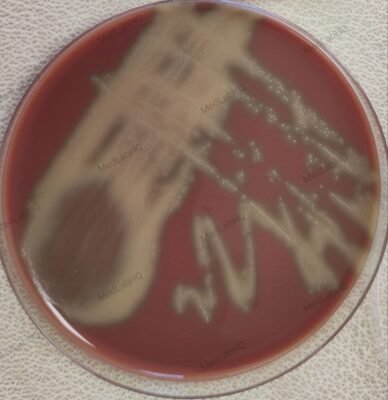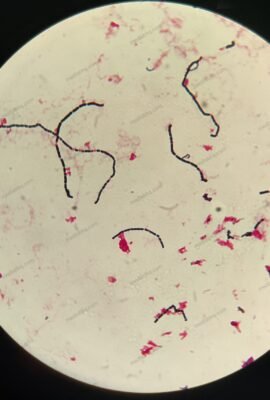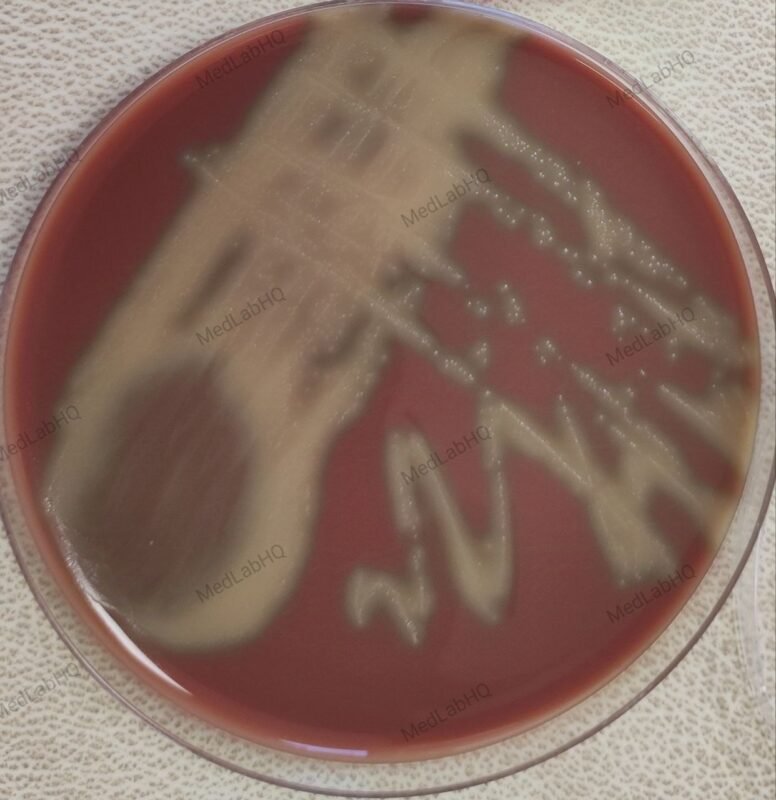Streptococcus mitis/oralis is commonly found in our mouths. In other words, it is part of the normal flora of the mouth and lives in harmony with us (their host) without causing disease. However, it can be an opportunistic pathogen and is known to cause infections such as endocarditis (infection of the heart valves) and dental caries (tooth decay). While it may sound unlikely, it could also cause a urinary tract infection.
How do mouth bacteria end up in the urinary tract? It is not what you think!!
Nevertheless, Streptococcus mitis/oralis is a member of the viridans group of streptococci. Streptococcus viridans is a group of Gram-positive bacteria typically found in the human mouth, upper respiratory tract, and gastrointestinal tract. From a laboratory perspective, they are known for their alpha-hemolytic properties, meaning they produce a greenish colouration on blood agar plates due to the partial breakdown of red blood cells.
While S. mitis/oralis is usually harmless, it can transform into a pathogen under certain circumstances. It causes infections in individuals with compromised immune systems. Streptococcus mitis/oralis can be responsible for various invasive diseases, like Infective endocarditis or bacteremia.
Table of Contents
Streptococcus mitis/oralis and Urinary Tract Infection
Perhaps most surprisingly, there have been documented cases of urinary tract infections (UTIs) caused by this oral bacterium. These cases often involve patients with underlying conditions such as diabetes, urinary obstruction, or immunosuppression.
Streptococcus mitis/oralis pathogenicity
How does a bacterium typically found in the mouth end up causing infections in other parts of the body? The answer lies in the complex interactions between the microorganism and its host. In immunocompromised individuals, S. mitis/oralis can breach the body’s natural defenses and enter the bloodstream. From there, it can travel to various organs and tissues, potentially causing infection.
In the case of UTIs, the route of infection is less clear. Some researchers speculate that the bacterium may be introduced through contamination or unusual anatomical conditions. For instance, one reported case involved a woman with diabetes and a urethral protrusion, highlighting the importance of underlying risk factors.
Implications for Clinical Practice
When is Streptococcus mitis/oralis reported as significant after laboratory testing?
Isolation or identification of S mitis/oralis in a lab does not automatically mean it is pathogenic to a patient since it is a normal flora of the oropharynx. The combination of the site of sample collection(throat swab, sputum, blood culture , urine etc.), patient clinical history and immune status will determine how seriously the organism will be taken. In a hospital setting, a consultant microbiologist would decide whether such an isolate can be tested for antibiotic susceptibility.
So distinguishing between contamination and true infection is very important, particularly when S. mitis/oralis is isolated from unusual sites.
How to identify or isolate Streptococcus mitis/oralis in the lab.
We take the following steps:
Samples can be sputum, Cough or throat swab, blood culture(flagged positive), Urine etc.
Culturing:
we inoculate the sample onto blood agar plates(plus other plates) and incubate at 35-37°C for 24-48 hours

Plate or culture reading:
We look for small, translucent colonies with a greenish hue (alpha-hemolysis).
Microscopic Examination:
We perform a Gram stain and look out for Gram-positive cocci in chains

Biochemical Tests:
We can do catalase test; Streptococcus species are catalase-negative. But this step is often optional and can be skipped.
Optochin Susceptibility Test:
We do this test to helps us differentiate Streptococcus mitis/oralis from Streptococcus pneumoniae. It is optochin-resistant while Streptococcus pneumoniae is optochin-sensitive.
Automated Methods:
We can use VITEK 2 compact and MALDI to identify Streptococcus mitis/oralis.

